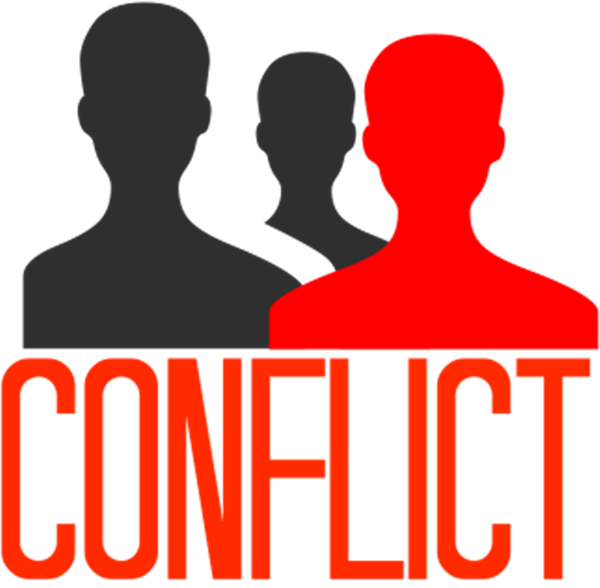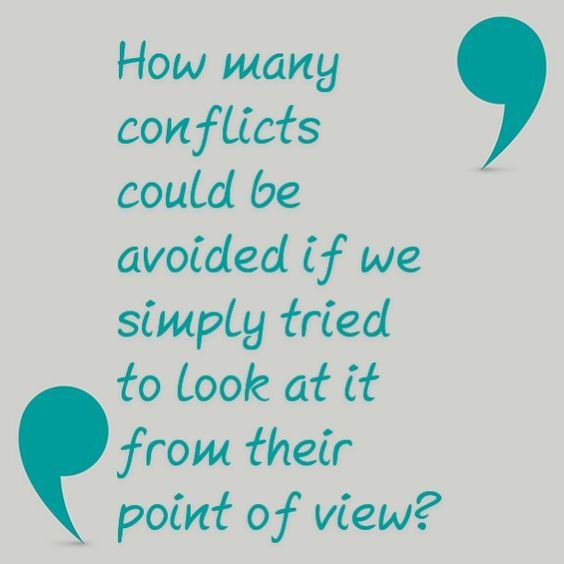CONFLICTS MANAGEMENT. (a series)

Conflict is a natural phenomenon and inevitable in human relationship. It occurs in families, communities, profit and non-profit organizations.
The church right from the bible days has been grappling with this problem of conflict. In fact the present state of the church depends on the number of conflict she experienced in the past.
In this contemporary time we have witnessed the greatest proliferation of churches and most of these churches were born out of conflict. Since it is not possible to rule out conflict in human ration and the church being an organization where people of different background, culture and language come together for fellowship and to carry out the ministry of Jesus Christ to the world it is important for us to examine the issue of conflict in church organization to find out how we can manage and also resolve any conflict situation in our churches.
Therefore, the following points will be discussed in this study material:
1, The meaning of conflict.
the causes of conflict
The effect of conflict
Types of conflict
The development of conflict
Historical overview of conflict
Conflict management
And conflict resolution
Stay on.
I. CONCEPTUAL DEFINITION OF CONFLICT.
Like most management terms conflict has no universally accepted definition. However, several attempts have been made by different authors to provide a workable definition of conflict.
Stoner (1982) stated that conflict is a disagreement between two or more organization members or groups arising from the fact that they must engage in interdependent work activities or from the fact that they have different status, goal or perception.
D.E. Egbe (2003) also stated that conflict sometimes takes the form of fighting, struggling, and quarrelling between the parties involved in any organization”. In fact conflict simply describes the sate of an organization where it is quite difficult for the different component or subsystem in the organization to harmoniously function as a whole for the achievement of organizational goals. Conflict situations in an organization can mar its lifestyle and hinder its success. It can also enhance the growth and development of a given organization if it is handled properly.

CAUSES OF CONFLICT.
What are the causes of conflict in organizations?
This section is going to identify some of the causes of conflicts in organization, be it profit making or non profit making organization like the church hence we have ascertain that conflict is inevitable.
I. Let us start with secular organization In modern industries:-
Industrial conflicts seem inevitable since the dominant aim of management is to maximize profits, while labors main concern is to secure and maintain the highest level of wages with the best of condition of service of their workers.
Yet peace in industry is one of the factors that enhance high productivity with resultant benefits not only to the labour and management, but also to the development of the country’s economy.
Here are some of the causes of industrial conflict:
(a) Wages issue:- These include wage rise, wage and salary structure. change in method of payment, irregular pay day, non payment of wages recommended by the government, overtime pay etc.
Issues of wages and wage –related matters have been referred to industrial arbitration panel (I.A.P) in most cases.
(b) Discipline:- This is another sources of industrial conflict.
These include: retirement, termination, suspension, querying the injustice and fairness of such actions mentioned above as well as procedure adopted likely result to conflict.
Between 1970 and 1986 about 62 trade disputes arising out of discipline were referred to I.A.P for adjustment.
(c) Treatment at work place:- This include physical work condition, enabling and conducive work environment, holidays with pay, greater employment security, transport, accommodation, provision of working tools, uniform, protective wears, retirement schemes etc.
Subsidizing of these could be regarded or grouped under hygiene or motivational factor. Stagner (1956).
Robbins (1974) stated that there are primary sources of conflicts with an organization that can be identified.
They includes communication problems organizational structure and Human factors such as personality, I will add these to the outline above and stress more on each of them.
(d) Communication:- During the communication process, distortion can occur at any point of the process, leading at times to conflict, for instance two conflicting parties may have access to difference information or different form of the same information.
(e) The structure of an organization:- This is another source of conflict. According to Nebgen (1978), size has been found to correlate with amounts of conflicts in an organization and the larger the organization the greater the number of conflicts and the higher the rate of conflicts intensity.
There have been opposing views however, which claim that size may indeed stimulate conflicts, but the seriousness and intensity of the conflict are also affected by many variables.
(f) Human factors within an organization:- While communication and structure factors can in part be controlled by management, human factors are largely beyond management control.
There are personality traits that have been found to correlate with increased conflicts. They are high authoritarianism, high dogmatism, and low self-esteem.
Organizational members dissatisfaction with role requirement is also a source of conflict.
(g) Share resources:- if resources in the organization are unlimited. The problem of sharing them would not arise.
The potential for conflict exists because these vital resources are limited and they must be shared or allocated.
(h) Difference in goals:- Organizational of sub-units tend to become differentiation frequently leads to conflict of interest or priorities e.g. sales department might want low prices to attract more customers while the production department meet manufacturing costs.
(i) Interdependence of work activities:- This exists when two or more sub-units depend on each other to complete their respective tasks. In such a case the potential for a high degree of conflict exists depending on how the situation is managed.
(j) Difference in perceptions or values:- The differences in goals among the organizations are frequently accompanied differences in attitude, values and perception that lead to conflict.
(k) Individual styles and organization ambiguities:- Some individuals escalates conflict, debate and argument into full-scale battles. People who are highly authoritarian and frequently annoy their colleagues by over reacting to mild disagreement. Inter-group conflict can also result from ambiguously defined work responsibilities and unclear goals. Ambiguous communication also can cause inter-group conflict.
